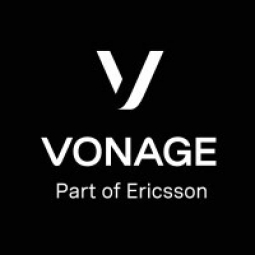Technology Category
- Robots - Wheeled Robots
- Sensors - Camera / Video Systems
Applicable Industries
- Buildings
- Healthcare & Hospitals
Use Cases
- Time Sensitive Networking
Services
- System Integration
About The Customer
Maven is the first digital clinic for women, offering a platform where users can schedule virtual appointments with a range of different medical practitioners. The app users enter information about their medical request or question, and are matched with a series of appropriate providers. They are then connected via live video to an expert of their choice and can chat securely using their own device. Maven's users are typically busy women who value the ability to access healthcare services at their convenience, without the need to travel to a doctor's office.
The Challenge
Maven, a digital healthcare clinic for women, was faced with the challenge of providing a healthcare service that would fit in with their users’ busy lives. The traditional healthcare model required women to take time out of their busy schedules to make an appointment and travel to a doctor’s office for a consultation, even for something as simple as a prescription question. Maven wanted to provide a service that would make it easier for women to get access to the health care services that they need, wherever and whenever they need them. The challenge was to find a solution that would allow for flexibility and mobile access to medical professionals.
The Solution
Maven turned to Vonage Video API to create a mobile-focused solution. Vonage Video's mobile SDKs made it easy to embed secure and reliable video directly into their mobile application. This allowed Maven to offer a service where users could securely and conveniently connect with medical professionals and get expert advice with just a few taps of their phones. The live video embedded directly within the Maven app enabled users to get the medical answers they need in ten minutes, without ever leaving home or the office. This solution not only provided the flexibility and convenience Maven was looking for but also made the service cost-effective.
Operational Impact
Quantitative Benefit

Case Study missing?
Start adding your own!
Register with your work email and create a new case study profile for your business.
Related Case Studies.

Case Study
Energy Saving & Power Monitoring System
Recently a university in Taiwan was experiencing dramatic power usage increases due to its growing number of campus buildings and students. Aiming to analyze their power consumption and increase their power efficiency across 52 buildings, the university wanted to build a power management system utilizing web-based hardware and software. With these goals in mind, they contacted Advantech to help them develop their system and provide them with the means to save energy in the years to come.

Case Study
Hospital Inventory Management
The hospital supply chain team is responsible for ensuring that the right medical supplies are readily available to clinicians when and where needed, and to do so in the most efficient manner possible. However, many of the systems and processes in use at the cancer center for supply chain management were not best suited to support these goals. Barcoding technology, a commonly used method for inventory management of medical supplies, is labor intensive, time consuming, does not provide real-time visibility into inventory levels and can be prone to error. Consequently, the lack of accurate and real-time visibility into inventory levels across multiple supply rooms in multiple hospital facilities creates additional inefficiency in the system causing over-ordering, hoarding, and wasted supplies. Other sources of waste and cost were also identified as candidates for improvement. Existing systems and processes did not provide adequate security for high-cost inventory within the hospital, which was another driver of cost. A lack of visibility into expiration dates for supplies resulted in supplies being wasted due to past expiry dates. Storage of supplies was also a key consideration given the location of the cancer center’s facilities in a dense urban setting, where space is always at a premium. In order to address the challenges outlined above, the hospital sought a solution that would provide real-time inventory information with high levels of accuracy, reduce the level of manual effort required and enable data driven decision making to ensure that the right supplies were readily available to clinicians in the right location at the right time.

Case Study
Intelligent Building Automation System and Energy Saving Solution
One of the most difficult problems facing the world is conserving energy in buildings. However, it is not easy to have a cost-effective solution to reduce energy usage in a building. One solution for saving energy is to implement an intelligent building automation system (BAS) which can be controlled according to its schedule. In Indonesia a large university with a five floor building and 22 classrooms wanted to save the amount of energy being used.

Case Study
Powering Smart Home Automation solutions with IoT for Energy conservation
Many industry leaders that offer Smart Energy Management products & solutions face challenges including:How to build a scalable platform that can automatically scale-up to on-board ‘n’ number of Smart home devicesData security, solution availability, and reliability are the other critical factors to deal withHow to create a robust common IoT platform that handles any kind of smart devicesHow to enable data management capabilities that would help in intelligent decision-making

Case Study
Gas Pipeline Monitoring System for Hospitals
This system integrator focuses on providing centralized gas pipeline monitoring systems for hospitals. The service they provide makes it possible for hospitals to reduce both maintenance and labor costs. Since hospitals may not have an existing network suitable for this type of system, GPRS communication provides an easy and ready-to-use solution for remote, distributed monitoring systems System Requirements - GPRS communication - Seamless connection with SCADA software - Simple, front-end control capability - Expandable I/O channels - Combine AI, DI, and DO channels








